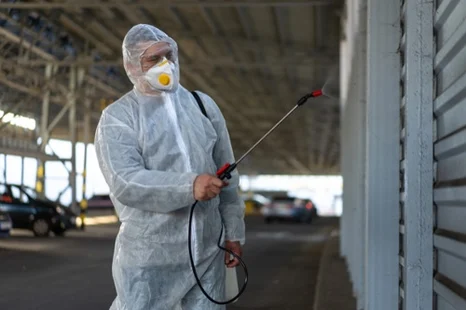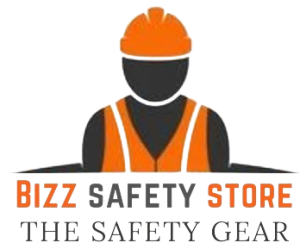Spill Control: The Complete Guide What is spill control?
Spill control is centred around reducing the likelihood and effects of a potentially
hazardous spill in the workplace. This can involve any fluid that is likely to cause harm to workers and the environment, including oils, fuels, chemicals and acids. To minimise the risk of the spill, there are guidelines to ensure that storage best
practices are adopted and to manage the effects of a fall. Multiple products are available designed to limit the spread and effect a fast and safe clean-up and disposal. What Spill Control Regulations are in place?
There are a lot of regulations around storing, transporting and using chemicals. Specific rules exist for different liquids, site types, and hazard levels. Spilling paint indoor sisavery different hazard from spilling acid outdoors near the water table —and the rule sare quite different. The vast majority of the general guidelines can be found under either the COSHH(Control of Substances Hazardous to Health) 2002 or COMAH (Control of Major
Accident Hazards) 2015 regulations. COSHH
COSHH requires business owners and employers to control any substances that couldbe hazardous to health. The law was updated and brought into force in 2002. Most industrial workplaces will use some chemicals, fuels, oils or other substancesat
some point — whether part of the production process, refuelling heavy machinery, or
maintenance or cleaning activities. These substances must be carefully managedandcontrolled to minimise the risks of harm to personnel or the environment.
Specifically relating to spill control measures, the regulations advise that operators, owners and managers must provide control measures to reduce harmto healthandkeep all control measures in good working order. COMAH
These regulations came into force on the 1st of June, 2015, replacing the previousrule established in 1999. The summary provided by the Health and Safety ExecutiveforCOMAH is:
‘Take all necessary measures to prevent major accidents involving dangerous
substances. Limit the consequences to people and the environment of any major
accidents which do occur.” As you can see, these guidelines are targeted more toward potential large-scaleaccidents like the Chevron Pembroke Refinery explosion and the Union CarbideBhopal
disaster. Any organisation that has the potential, however unlikely, of a major accident occurring, needs to pay particular attention to these guidelines — if the worst does cometopass, owners, operators and managers can and will be prosecuted if they cannot demonstratethat they were operating within the rules. The full COMAH regulations and guidance can be found on the HSE website at COMAH- Guidance (hse.gov.uk). Always be sure to check any locally enforceable regulations as well as site or chemical-specific rules and guidelines. The HSE provides guidelines specific to several industries, an index of which can be found here.
If in doubt, contact a health and safety or COSHH professional. The rules for chemical
storage at offshore facilities are a different entity to onshore sites and can be foundhere.
Spill prevention
Good quality, well-thought-out storage is vital to your spill prevention strategy. Makesure that chemicals are stored securely and with diligent attention paid to safety at
every turn. Chemical storage cabinets should always be used to store smaller volumes of
potentially hazardous liquids— they are made from steel, lockable, clearly markedandinclude lipped shelves and sumps to prevent spills or leaks from leaving the cabinet.
Larger volume containers, such as oil drums or fuel tanks, should be placed ona bunded pallet, ensuring that all spillage is collected and contained safely
before entering the environment.
Similar solutions exist for generators and plant machinery used outdoors (constructionsites, outdoor events etc.), ensuring that diesel or petrol isn’t able to pass into theecosystem or present an increased risk of fire. How to conduct a spill management risk assessment?
Risk assessment is the first step in any spill management or response activity. Thiswill
give you a detailed breakdown of where your chemicals are, what kind there are, inwhat volumes, and what you need to put in place regarding products, proceduresandtraining. Risk assessments are legally mandated under the Management of Health andSafetyat
Work Regulations, 1999. These dictate that, at a minimum, employers must dothefollowing: Identify anything within the business that has the potential to cause injury or illness
Assess the likelihood of that risk causing any harm and to what extent Eliminate or control the risk
Conducting a spill management risk assessment doesn’t need to be complicated, but it
needs to be as thorough and accurate as possible.
Identify
Identifying potential risks can be daunting — after all, combining human error withmachine or equipment malfunction can produce an almost limitless number of thingsthat could go wrong. Your responsibility is to identify likely risks and break this
procedure into a more manageable activity. Consider how your staff work, how machinery and equipment are used and howtheyinteract with each other. Detail exactly what chemicals are used, where and howthey
are stored, how they can react with each other and how they are used. Reviewanypotentially unsafe practices, and use any accident or injury logs you keep to identifywhat issues have arisen in the past. Assess
Here is where you assess the level of the risk— what is the probability of an issuearising, and if it does arise, what is the likely outcome? A leaky fuel tank next toawelding station would present an extremely high likelihood of an accident with acatastrophic outcome, whereas a relatively inert cleaning fluid kept on a high shelf
presents a reasonably good chance of an accident but with little associated danger. Look at the impacts of a complete spill — so if you keep 250 litres of a chemical on-site, what would happen if the entire load was spilt? From there, look at what measuresarealready in place to mitigate the risks (storage procedures, for example). Then, assesswhat else needs to be done to minimise the risk of a hazardous spill. Eliminate/control
This is where you put into action all you’ve identified so far. If you are storing or usingchemicals on-site, you are likely doing so for a reason — you need themfor your
business — so it’s unlikely you’ll be able to eliminate any spill risks. Controlling these risks doesn’t need to be difficult, though. Ensure you are up todatewith storage best practices, and make every endeavour to implement, monitor, andtrainstaff on these guidelines. Drip trays: how and where should you use them?
Spill trays, or drip trays, are a great way of preventing a leak or spill frombecomingahazard. Basic drip trays consist of a rigid frame supporting an empty container tostore
the spilt liquid, whereas more advanced models will contain absorbent pads andwater
drainage features.
Because drip trays are relatively small and easy to move around as needed, youshouldlook at using one whenever you are decanting chemicals from bulk to smaller storageorotherwise transferring liquids between containers. This is one of the most common times a spill can occur, and drip trays represent acost-effective, easy-to-use and fast way of mitigating the risks. Additionally, consider usingadrip tray for small volume storage where a dedicated chemical storage cabinet isunavailable/appropriate. Spill pallets: what are they, and when should you use one?
A spill pallet is essentially a much larger version of a spill tray. They are built toholdoil
and fuel drums and IBCs intermediate bulk containers (IBCs) and can collect andstorelarge quantities of spilt fluids. These pallets comprise a supporting grid that holdsthecontainer, a layer of absorbents to soak up leaks quickly, and a frame to hold thewholething together.
Spill pallets should always be able to absorb and retain more liquid than the volumeof
the largest container kept upon it. UK government guidance requires that a bundusedfor an oil storage container must be able to hold 110% of the capacity of the container.
Best practice dictates that you should use a bunded spill pallet at any time or placeyouare storing large volumes of chemicals or fuels, typically in drums or in IBCs. Cleaning oil spills
Cleaning oil spills can be tricky — whether it’s hydraulic oil, engine oil, lubricatingoil, or
cooking oil. These substances can be particularly hazardous, as they can present anincreased slip risk and a fire risk, in addition to ruining your floor if allowed to stainanddestroying ecosystems if they reach a drain or water source. There are two main types of spill kits designed for use against oils:
Oil and fuel spill kits. These contain absorbent pads and rolls that are made out of
hydrophobic materials. This means they actively repel water, absorbing only thehydrocarbons (i.e. the fuels and oils). Particularly useful in outdoor or damp
environments, these absorbents are also used to make more advanced types of
drip trays used for generators and fuel cans, as they will not become saturatedwithrainwater. Universal spill kits. These are a more generic spill kit. They can be used for solvents, water, oil and fuels. Because they also absorb moisture, these are less useful inoutdooror damp environments as they can become quickly saturated with water and thusbecome less effective against the oil spill.
What to do if you spill petrol or diesel?
Petrol and diesel present significant health and safety risks when spilt. They makethefloor extremely slippery, which increases the likelihood of injury through falling. They are highly flammable, and any fires can be challenging to contain and extinguishwithout the proper equipment and training. Environmentally speaking, petroleumproducts can contaminate drinking water, kill aquatic wildlife and make it very difficult totreat sewage. As a result, because petrol and diesel are some of the more commonliquid chemicals in industrial environments, special care needs to be taken. You’ll want to use hydrophobic socks and pads for oil spills. This will allowyoutocleanthe maximum amount of the spill in the shortest time. Make sure to keep sufficient
quantities of absorbents, and if your site is large or fuels are used or stored in different
locations, be sure to keep several smaller spill kits spaced around.
Petrol and diesel have a lower viscosity than oils (meaning that the spill will spreadmuch faster), so you need to be able to respond as quickly as possible. Use the smaller kits nearest the spill to stop the spread and supplement as necessaryfrom elsewhere on site. As with any chemical spill, dispose of the saturated absorbentscarefully and safely. How do spill kits work?
A good quality spill kit will contain everything you need to manage and clean upthespilt
liquid. They are designed to be used effectively with little to no training and canbedeployed very quickly in a hazardous spill emergency. At a minimum, a standard spill kit will contain: Absorbent socks to build a wall around the spill and prevent it from spreading
Absorbent pads to soak up the spill Disposal bags for the safe and clean disposal of the saturated absorbents
More advanced kits might include equipment specific to the type of spill —a paint spill
kit, for example, might consist of a tray for the paint can and scrapers to deal withthevery viscous fluid

